Bolstering Preparedness and Risk Reduction in Mongolia: CADRI Partnership’s Support for the Land of the Eternal Blue Sky
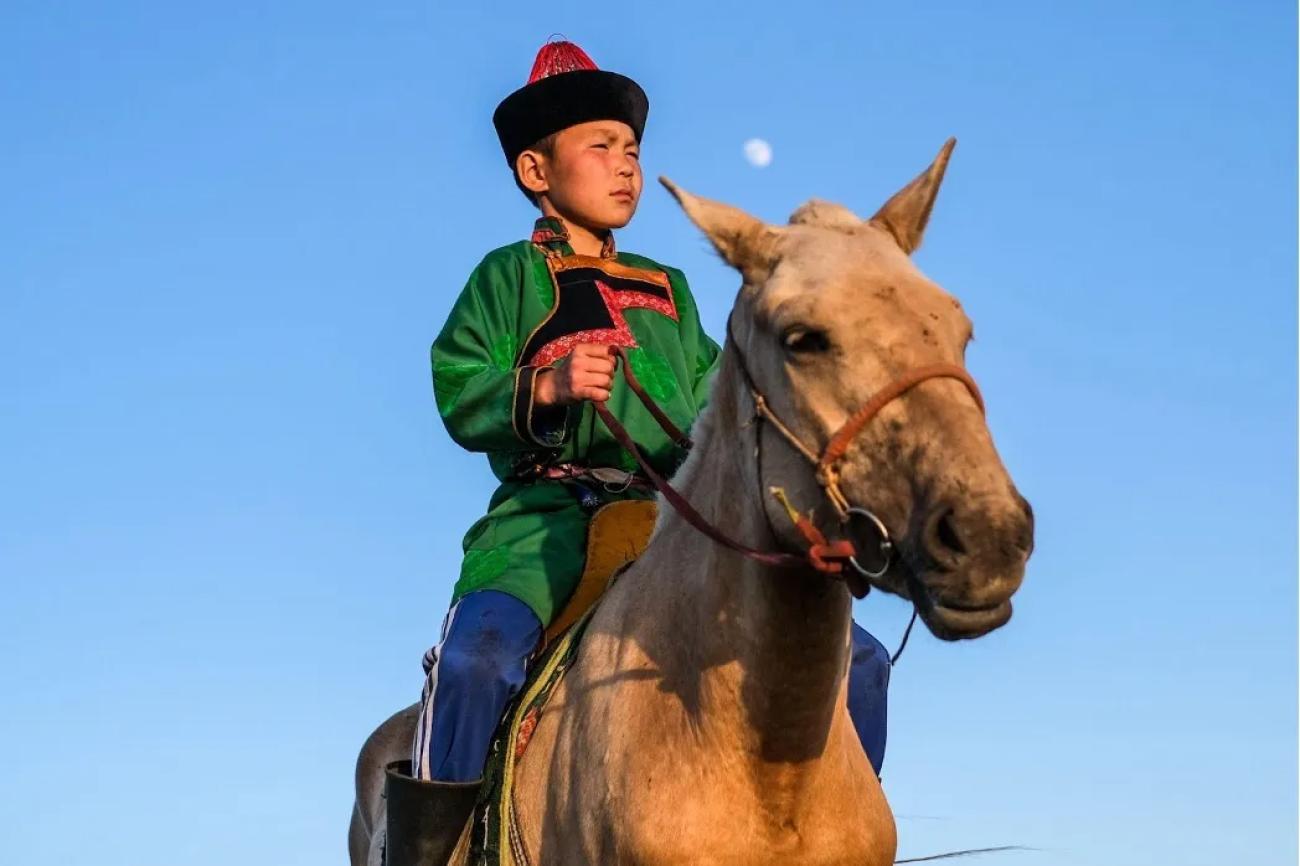
Mongolia is increasingly grappling with diverse natural hazards, with climate-related events becoming more frequent and intense.
The country is vulnerable to devastating droughts, harsh winters known as dzuds, and the relentless expansion of deserts, deeply impacting people’s livelihoods, health, and the economy. These challenges are further compounded by climate change, with rising temperatures and dwindling water sources causing widespread ecosystem damage and biodiversity loss.
In response, the Government of Mongolia turned to the CADRI Partnership for support. Since 2023, they have been working together to identify critical actions and investments to strengthen disaster risk reduction (DRR) and early warning systems to safeguard the nation’s people, ecosystems, and economy from future threats.
A unique risk landscape and challenge for sustainable development

CADRI Secretariat, 2023
Nestled between Russia and China, Mongolia’s vast landscapes — from towering mountains to the expansive Gobi Desert — face growing climate-related risks that are reshaping the country’s future. Home to 3.4 million people, with nearly half living in the capital, Ulaanbaatar (the world’s ‘coldest capital city’), Mongolia’s unique geography is increasingly threatened by hazards including droughts, dzuds, dust storms, floods, and earthquakes.
Rising temperatures and water scarcity continue to pose significant threats to agriculture, livestock, livelihoods, and ecosystems. As climate change accelerates, Mongolia’s rural communities, reliant on farming and livestock, are bearing the brunt of these risks, creating urgent challenges for public health, the environment, and the economy.
Developing a robust disaster risk management system
During recent decades, Mongolia has made significant progress in establishing a disaster risk management system. The establishment of the National Emergency Management Agency (NEMA) in 2003 — through merging the Civil Defense Organization, Fire Fighting Department, and State Reserve Department — marked a key milestone in strengthening Mongolia’s DRR capabilities. Operating under the updated 2017 Law on Disaster Protection, NEMA aligns with global frameworks including the Sendai Framework for DRR and Mongolia’s Vision 2050 development policy.

Representatives of Local Emergency Management Agencies (LEMAs) | CADRI Secretariat, 2023
In 2017, Mongolia also established a multi-stakeholder institutional framework for DRR (National Council on DRR) and response (Emergency Commission) at national and local levels. Over time, the country has improved its risk assessment, emergency response, and integration of DRR into sectors like education and housing, building a more resilient system to address increasing risks.
Laying the groundwork for a collaborative approach to assessing Mongolia’s DRR capacities
Despite progress, there remains an urgent and growing need to strengthen disaster preparedness and risk reduction systems in Mongolia. In response, in May 2023 NEMA requested the support of the CADRI Partnership to assess and enhance the country’s capacities to manage and reduce disaster and climate risks.
In June 2023, the CADRI team, in collaboration with NEMA and the UN Resident Coordinator’s Office (RCO) in Mongolia, conducted a hybrid scoping mission to define the assessment’s objectives, methodology, and timeline. This mission engaged key stakeholders — including government ministries, local authorities, the UN Country Team, civil society, and private sector partners — ensuring the process was tailored to Mongolia’s socio-economic context and risk governance priorities.
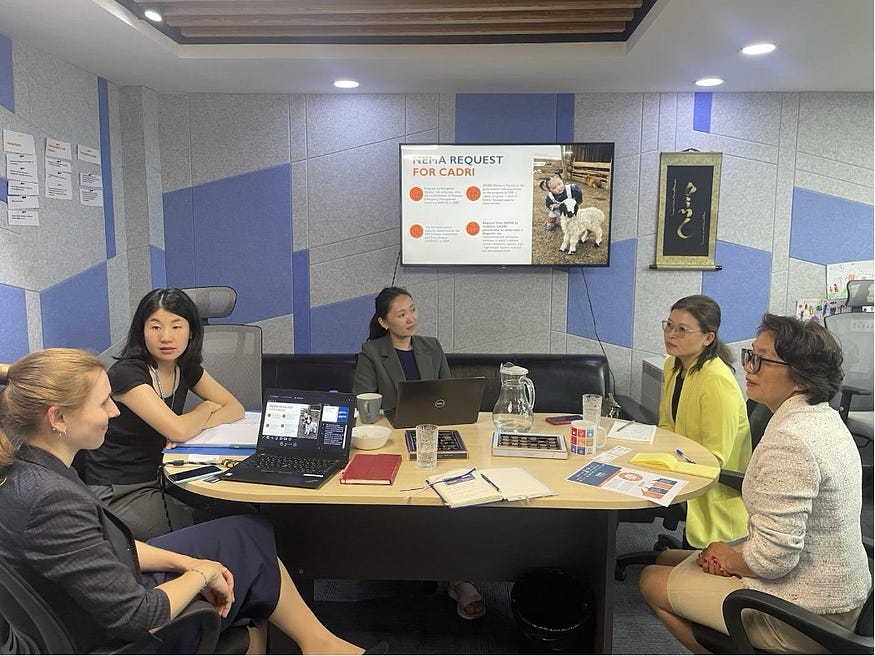
The CADRI Team and UN Resident Coordinator’s Office in Mongolia during the scoping mission | CADRI Secretariat, 2023
A unified effort to strengthen Mongolia’s disaster and climate resilience
Following the scoping mission, the CADRI Partnership mobilized a team of experts in September 2023 to conduct a multi-sectoral capacity diagnosis, led by the UN RCO and closely supported by NEMA.

Some of the mission team during the CADRI capacity diagnosis | CADRI Secretariat, 2023
The team, comprising international experts from the CADRI Secretariat, IOM, UNDAC, and UNDRR, focused on preparedness, early warning systems, and risk reduction, assessing five critical capacity dimensions: governance, implementation, financing, knowledge, and technology. Priority sectors such as agriculture, infrastructure, education, health, and human mobility were carefully examined to ensure a comprehensive and context-specific analysis.
The assessment also focused on climate services, with WMO deploying two specialists from the Korea Meteorological Administration (KMA) and China Meteorological Administration (CMA). National experts from FAO, UNDP, UNFPA, UN-Habitat, and World Vision Mongolia also joined the mission, forming a diverse team of experts across multiple sectors.
Strong government leadership
The Government of Mongolia showed exceptional leadership and engagement throughout the process. NEMA played a central role, coordinating efforts, facilitating consultations, and ensuring broad participation at both national and local levels. The government also provided invaluable support by granting access to critical data, technical expertise, and key insights, all of which were crucial to the success of the assessment.

CADRI Secretariat, 2023
Engaging national and local stakeholders
The assessment was centered in Mongolia’s capital Ulaanbaatar, with field visits to the provinces of Uvs, Dundgovi, and Sukhbaatar. Over 100 national representatives and 120 local stakeholders were engaged, including participants from seven civil society organizations and two private sector entities. Through a combination of semi-structured interviews, desk reviews, and consultations, the CADRI team evaluated existing systems, identified strengths, and pinpointed key challenges, ensuring a comprehensive and nuanced analysis.

Map of provinces visited by the mission team | CADRI Secretariat, 2023
Agriculture and environment nexus
Mongolia’s agricultural practices have long been intertwined with the country’s environment, shaping both landscapes and livelihoods. Over time, however, these practices have increasingly impacted natural ecosystems. While the identification, monitoring, and early action for dzud risk are well integrated into governmental processes, there remains a strong need to address broader environmental concerns.

UNDP Mongolia, 2023
The agriculture-environment nexus — beyond land exploitation — was a key focus for discussion with agriculture and environment authorities. Specific topics included aligning livestock numbers with climate projections, with recommendations emphasizing strengthening risk monitoring systems, promoting sustainable pasture management, and adopting climate-resilient agricultural practices.
Strengthening critical infrastructure: Addressing Ulaanbaatar’s challenges
The assessment of the infrastructure sector focused on key areas such as schools, hospitals, energy infrastructure, and flood control systems, with particular emphasis on Ulaanbaatar, the nation’s capital. This focus was determined during the scoping mission, given the significance of peri-urban Ger communities and informal settlements surrounding the capital.
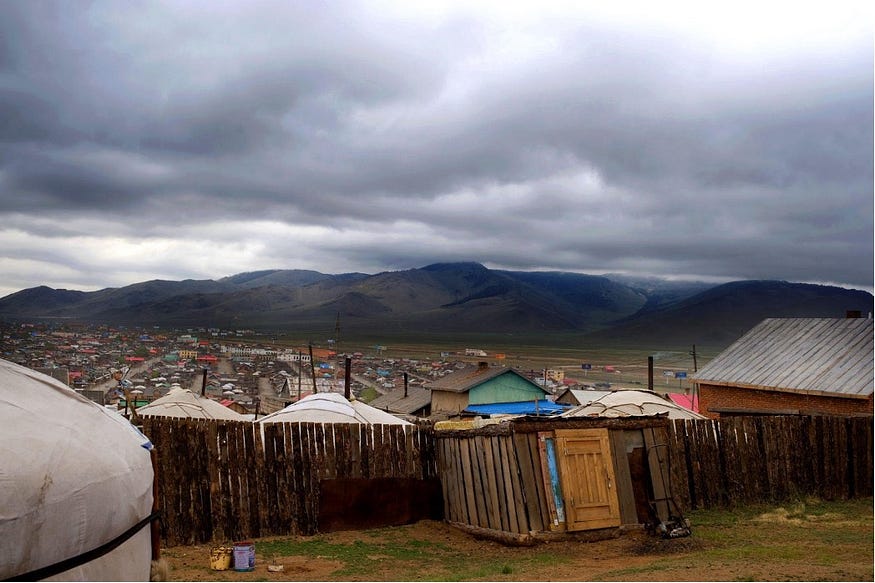
IFRC, 2023
Addressing human mobility in Mongolia’s risk reduction planning
As rural-to-urban migration continues to rise, especially toward Ulaanbaatar, and with Mongolia’s longstanding tradition of internal movement, the assessment focused on addressing the challenges related to tracking and managing both short- and long-term migration. Particular attention was given to short-term movements (less than three months), for which data is limited.
Using the human mobility component of the CADRI Tool, the mission team evaluated the integration of mobility aspects into national DRR and climate change adaptation (CCA) planning. Key areas of focus included disaster displacement, cross-border movements, evacuations, planned relocation, facilitated migration, the inclusion of migrants, displaced persons, and refugees in risk reduction efforts, and assistance to Mongolian nationals abroad.
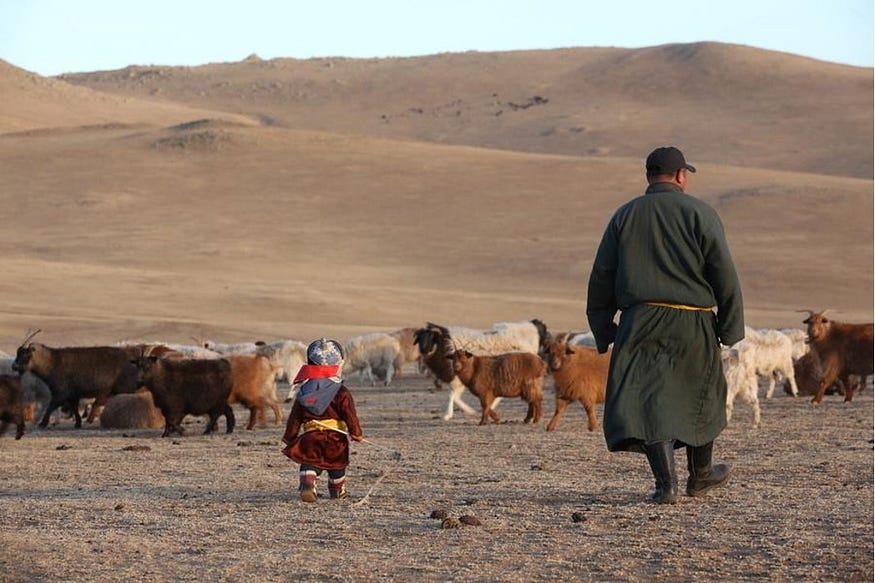
IOM, 2023
Actionable recommendations for a resilient future
The CADRI capacity diagnosis delivered actionable recommendations to support the Government of Mongolia in strengthening the country’s resilience to disasters. Key recommendations included improving multi-hazard early warning systems, building local capacity, and protecting vulnerable groups, such as women, children, the elderly, and persons with disabilities. The assessment also highlighted the importance of inter-agency coordination, technological investments, and risk-informed development planning.
In December 2024, the findings and recommendations were validated at the National Council on Disaster Risk Reduction (NCDRR) meeting in Ulaanbaatar, where NEMA and other key stakeholders committed to immediate implementation and monthly progress monitoring.
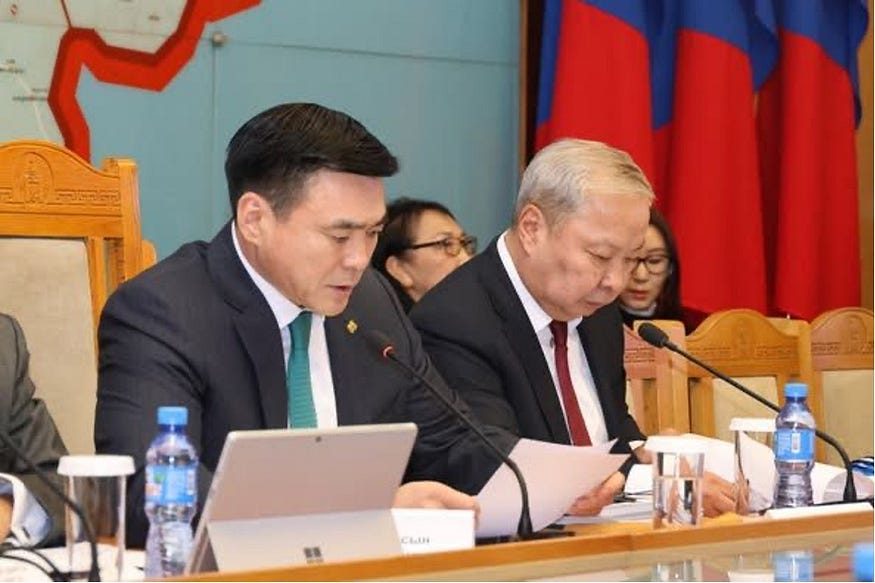
H.E. Mr. S. Amarsaikhan, Deputy Prime Minister of Mongolia, delivering remarks at the NCDRR meeting in December 2024 | NEMA, 2024
These findings and recommendations are pivotal in reshaping Mongolia’s approach to disaster and climate resilience. They provide a foundation for evidence-based policies and programmes, supporting a more robust and coordinated national response to disaster and climate risks. Aligned with global frameworks like the Sendai Framework for DRR and Mongolia’s Vision 2050, these actions will serve as the cornerstone for safeguarding the country’s people, economy, and environment from the escalating threats of natural hazards and climate change.
This story is originally published on CADRI Partnership (Bolstering Preparedness and Risk Reduction in Mongolia: CADRI Partnership’s Support for the Land of the Eternal Blue Sky | by CADRI Partnership | Jan, 2025 | Medium)









